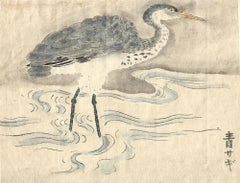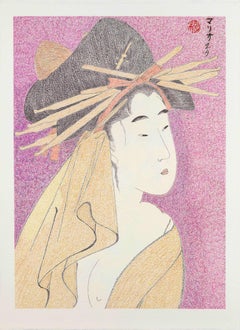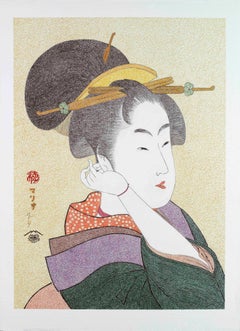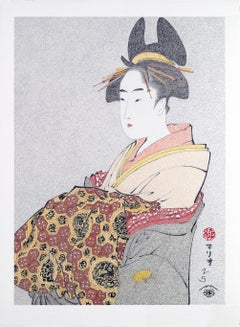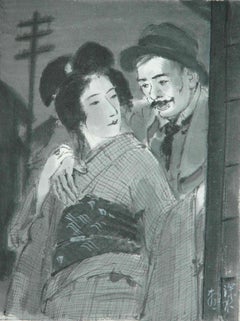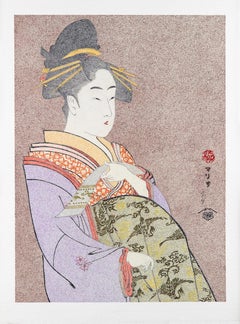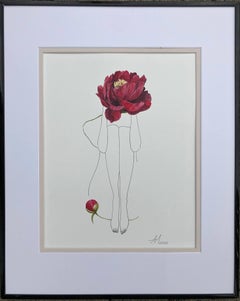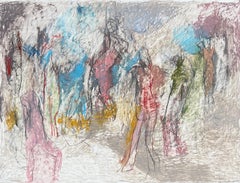Edo Figurative Drawings and Watercolors
Mid-19th Century Edo Figurative Drawings and Watercolors
Ink, Watercolor, Handmade Paper, Laid Paper
2010s Edo Figurative Drawings and Watercolors
Paper, Crayon, Oil Crayon, Graphite
2010s Edo Figurative Drawings and Watercolors
Paper, Crayon, Oil Crayon, Graphite
2010s Edo Figurative Drawings and Watercolors
Paper, Crayon, Oil Crayon, Graphite
1920s Edo Figurative Drawings and Watercolors
Sumi Ink
2010s Edo Figurative Drawings and Watercolors
Paper, Crayon, Oil Crayon, Graphite
2010s Edo Figurative Drawings and Watercolors
Crayon, Paper, Oil Crayon, Graphite
2010s Edo Figurative Drawings and Watercolors
Paper, Crayon, Oil Crayon, Graphite
2010s Edo Figurative Drawings and Watercolors
Crayon, Paper, Oil Crayon, Graphite
2010s Edo Figurative Drawings and Watercolors
Paper, Crayon, Oil Crayon, Graphite
2010s Edo Figurative Drawings and Watercolors
Paper, Crayon, Oil Crayon, Graphite
2010s Edo Figurative Drawings and Watercolors
Paper, Crayon, Oil Crayon, Graphite
2010s Edo Figurative Drawings and Watercolors
Crayon, Paper, Oil Crayon, Graphite
2010s Edo Figurative Drawings and Watercolors
Paper, Graphite, Crayon, Oil Crayon
2010s Edo Figurative Drawings and Watercolors
Crayon, Paper, Oil Crayon, Graphite
2010s Edo Figurative Drawings and Watercolors
Crayon, Paper, Oil Crayon, Graphite
2010s Edo Figurative Drawings and Watercolors
Crayon, Paper, Pencil, Graphite
2010s Edo Figurative Drawings and Watercolors
Paper, Crayon, Oil Crayon, Graphite
Mid-19th Century Edo Figurative Drawings and Watercolors
Paper, Ink
2010s Edo Figurative Drawings and Watercolors
Paper, Ink, Watercolor
2010s Edo Figurative Drawings and Watercolors
Oil Crayon, Mixed Media, Handmade Paper, Graphite
21st Century and Contemporary Edo Figurative Drawings and Watercolors
Paper, Graphite, Acrylic, Pastel, Charcoal, Wood
2010s Edo Figurative Drawings and Watercolors
Paper, Pastel, Graphite
1970s Edo Figurative Drawings and Watercolors
Archival Ink, Paper, Watercolor
21st Century and Contemporary Edo Figurative Drawings and Watercolors
Paper, Wood, Charcoal, Pastel, Acrylic, Graphite
21st Century and Contemporary Edo Figurative Drawings and Watercolors
Watercolor, Laid Paper
1870s Edo Figurative Drawings and Watercolors
Crayon, Graphite
2010s Edo Figurative Drawings and Watercolors
Paper, Ink, Watercolor
2010s Edo Figurative Drawings and Watercolors
Oil Crayon, Mixed Media, Handmade Paper, Graphite
21st Century and Contemporary Edo Figurative Drawings and Watercolors
Archival Paper, Ballpoint Pen, Graphite, Oil Pastel
1950s Edo Figurative Drawings and Watercolors
Gouache, Ink, Laid Paper
Late 18th Century Edo Figurative Drawings and Watercolors
Copper
20th Century Edo Figurative Drawings and Watercolors
Silk
